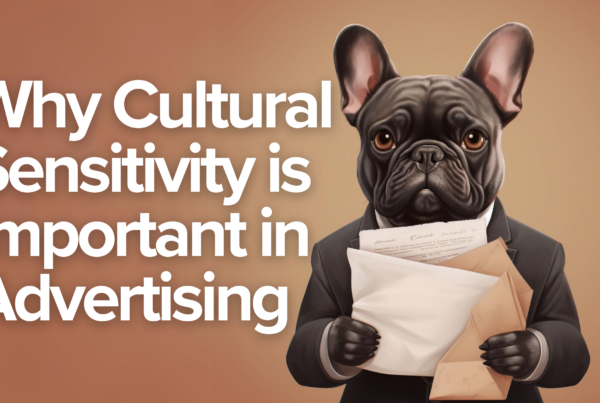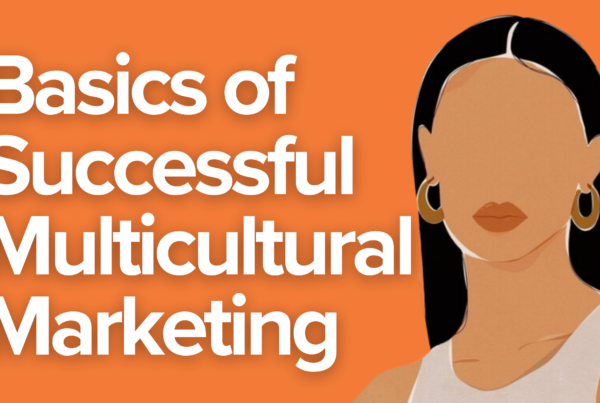Every year marketing professionals seat down to define their marketing budget for the following calendar year. Making sure the investments will be well used and designed to the right channels and campaigns might be challenging. You should also consider each marketing strategy – Total Marketing or Multicultural Marketing – make more sense for your company.
How to make sure your company is investing in the right Marketing Strategy?
Some corporations end up choosing a Total Marketing approach when defining their strategy with the thought that targeting anyone and everyone will bring them the most results.
The issue with a Total Marketing approach is treating different audiences the same way and talking to them using the same language. The USA is a multicultural nation, according to the 2019 US Census Bureau around 40% of the total population DO NOT recognize themselves as white non-Hispanic Americans. The total of households speaking a non-English language at home, for instance, is 21,5% according to the Census Bureau.
To learn more about How to communicate with the Hispanic Consumer – the multicultural marketing way. Click here.
Your Company might be investing 100% of their marketing budget to reach only 60%, OR LESS, of their potential audience, excluding all the multicultural consumers out there.
People consume products and services in different ways according to their background, ethnicity, religion, race, education… Choosing the right Marketing Strategy especially when targeting Multicultural Audiences is essential to get the most Budget ROI (Return of Investments).
KEEP IN MIND: While the TOTAL MARKETING STRATEGY segregates the audience, the MULTICULTURAL MARKETING STRATEGY brings all together.
To learn more about the differences between Total Marketing and Multicultural Marketing, click here.
How to succeed when planning a Multicultural Marketing Strategy?
Ultimately, Multicultural Marketing Strategy Mistakes might be expensive for your company. The wrong approach may cause a negative feeling, a decline in purchase intent, a drop in sales, or, in some cases, even a decline in stock prices.
- Who is your target audience? Where they are from? Which language do they speak? What kind of challenges they have? Your company needs to have clear who is your Multicultural Audience and how to speak with them and not to them. Understanding your buyer persona is crucial.
- Do not make any assumptions when planning a Multicultural Marketing Strategy. The best way to design a successful marketing campaign is to spend quality time doing some research regarding your target audience. The “one size fits all” approach is a trap when used for a Multicultural Audience, a mistake might be taken as racist, or even promote cultural stereotypes or be disrespectful to certain cultures.
- Have a plan. Based on the researches about your target audience, gather your marketing professionals to design a detailed plan on how to approach your Multicultural Audience. If either your company does not have the expertise needed for such a task or you want a different set of eyes and opinions, you can always call professionals that have the expertise you need.
- Track your campaign performance. Monitoring your campaign results can help identify its successes or failures, as well the reasons behind them. This way your team can come up with better ways to to suit your campaign to your target multicultural audience. Your multicultural marketing efforts need to be traced back to Budget – so to measure success.
What to not to do when targeting a Multicultural Audience?
In 2017, a Dove Body Wash ad on Facebook backfired making the company come publicly to appoligize.
The 3 seconds GIF showed the different woman removing their t-shirt to reveal the next. One of the woman, an African-American one, is followed by a white woman in a light shirt. The sequences ended up evoking an old racist batle in soap adverstising: a “dirty” black person being cleaned into whiteness.
Later on, the company had their spokeswoman apologizing, saying that the GIF “was intended to convey that Dove Body Wash is for every woman and be a celebration of diversity, but we got it wrong and, as a result, offended many people.”
To learn more about how to plan a reliable Multicultural Marketing Strategy, click here.
What to do when targeting a Multicultural Audience?
On the other hand, the campaign “You Love Me” by Apple’s Beats by Dre subsidiary is a great example of having your target audience clear and also understanding how to approach and engage with them. The campaign celebrates Black culture, resilience, and people in a direct and senstive way.
Why your brand can’t afford to not use a Multicultural Marketing Strategy?
The reason why we believe your brand can not afford to not use Multicultural Marketing is that there is a great opportunity that has not been fully explored.
According to the Association of National Advertisers (ANA), while almost 40% of the US population is multicultural, media investments towards these groups was only 5.2% of total spending in 2019.
Most of the companies are missing the opportunity to engage with multicultural consumers and growth their business.
So the need for inclusive and tasteful MULTICULTURAL MARKETING STRATEGY is very obvious to any brand that wants to thrive in a socially-aware and diverse market.
Do you want to count on a team of experts in Multicultural Marketing?
RESOURCES:
The reason why we believe your brand can not afford to not use Multicultural Marketing is that there is a great opportunity that has not been fully explored.
According to the Association of National Advertisers (ANA), while almost 40% of the US population is multicultural, media investments towards these groups was only 5.2% of total spending in 2019.
Most of the companies are missing the opportunity to engage with multicultural consumers and growth their business.




3 Comments